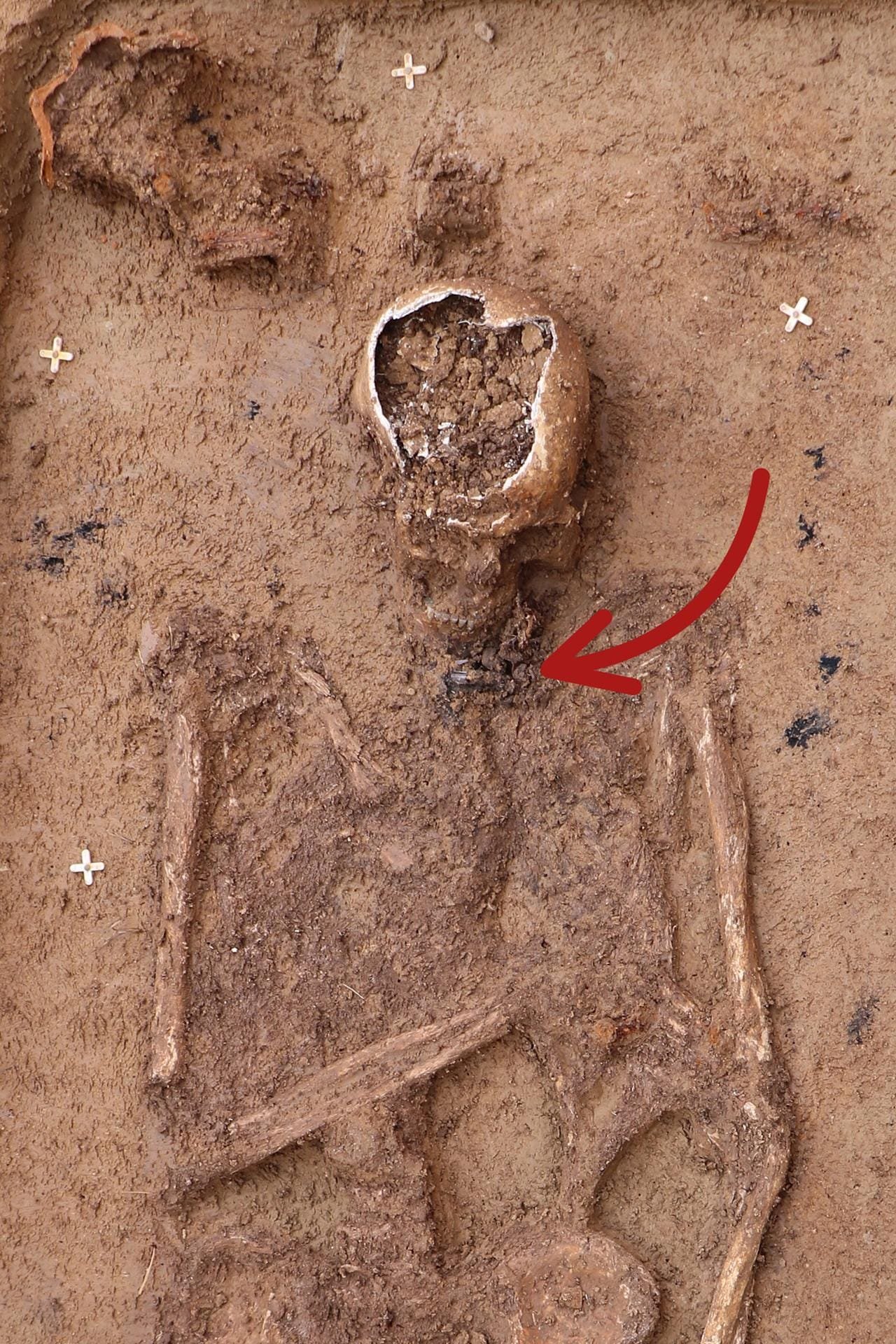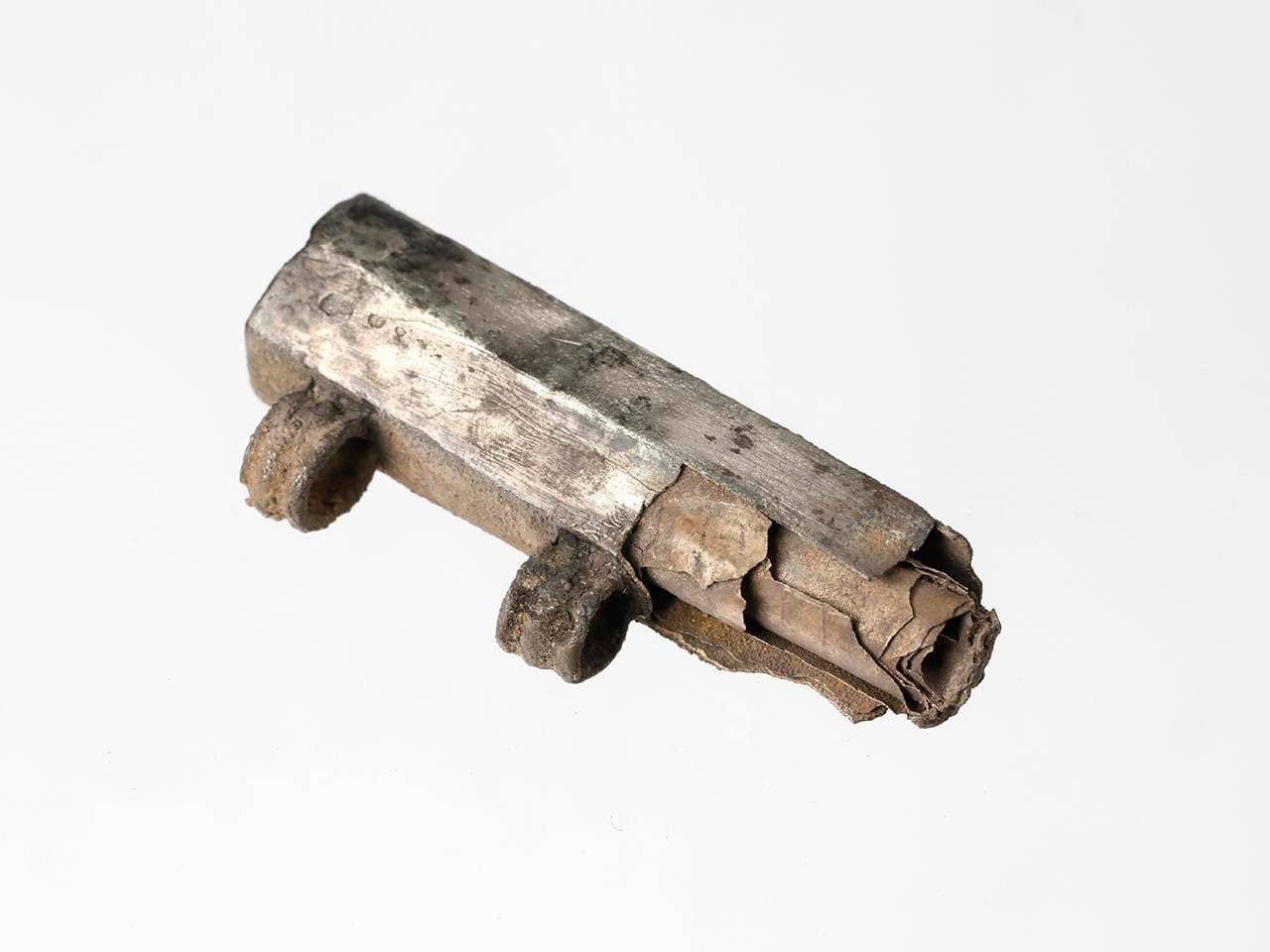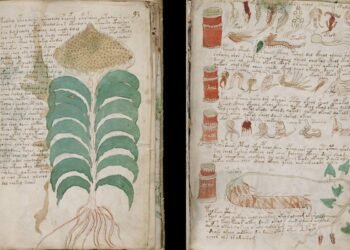Archaeologists have uncovered a groundbreaking artifact in a 3rd-century Roman grave near Frankfurt, Germany, which provides the earliest archaeological evidence of Christianity north of the Alps. The artifact, a silver amulet known as the “Frankfurt Silver Inscription,” dates back to approximately 230-270 CE and predates previously known Christian artifacts from this region by nearly 50 years.

Discovery and Significance
The silver amulet was found during a 2017-2018 excavation of a Roman cemetery in the Heilmannstraße area, the site of the ancient Roman city of Nida. The burial ground, which contained 127 graves, was notable for its unusually high proportion of inhumation burials—a practice uncommon in other Roman cemeteries in Frankfurt. Among these graves, one stood out: the resting place of a man aged 35-45 years. Alongside grave goods such as an incense burner and pottery, archaeologists discovered a small rolled silver foil beneath the man’s chin. The amulet, likely worn on a ribbon around the neck, is classified as a phylactery—a container designed to protect the wearer through its contents.
The inscription etched into the amulet’s silver foil was deciphered using advanced computer tomography technology at the Leibniz Center for Archaeology (LEIZA) in Mainz. This non-invasive method allowed researchers to digitally “unroll” the fragile scroll, which would have disintegrated if manually handled. The digital imaging process revealed an 18-line Latin text containing exclusively Christian content—a rarity for its time.

Translation and Interpretation
The text of the Frankfurt Silver Inscription translated into English:
(In the name?) of St. Titus.
Holy, holy, holy!
In the name of Jesus Christ, Son of God!
The lord of the world
resists to the best of his [ability?]
all seizures(?)/setbacks(?).
The god(?) grants well-being
Admission.
This rescue device(?) protects
the person who
surrenders to the will
of the Lord Jesus Christ, the Son of God,
since before Jesus Christ
bend all knees: the heavenly ones,
the earthly and
the subterranean, and every tongue
confess (to Jesus Christ).

The text opens with a reference to St. Titus, a disciple of the Apostle Paul, and includes invocations such as “Holy, holy, holy!” and “In the name of Jesus Christ, Son of God.” It also incorporates elements of Christian liturgy, including a near-verbatim quotation from Paul’s letter to the Philippians (Phil. 2:10-11). Prof. Dr. Markus Scholz of Goethe University, Frankfurt, who led the deciphering process, remarked the text’s sophistication suggests it was crafted by an elaborate scribe, and its purely Christian content is extraordinary for this period, where religious syncretism was more common.
Typically, amulets from this era contained a blend of Christian, Jewish, and pagan elements. However, the absence of references to Yahweh, angels, or pagan deities in this inscription underscores its exclusively Christian nature. This uniqueness not only highlights the wearer’s devotion but also raises questions about the role of Christianity in Nida, a city that was once a cultural and administrative hub of Roman Germania.
Broader Implications
The discovery has significant implications for multiple fields, including archaeology, theology, and Roman history. It pushes back the timeline for evidence of Christianity in the region by several decades. Historical sources had hinted at Christian communities in Gaul and Upper Germania as early as the late 2nd century, but tangible proof north of the Alps was previously limited to the 4th century.

Technological Advances and Collaboration
The meticulous preservation and analysis of the amulet exemplify the benefits of collaboration between institutions. The project involved several organizations and project partners, including the City of Frankfurt on the Main, the Archaeological Museum Frankfurt (AMF), the Frankfurt Department of Planning and Housing, LEIZA, Johann Wolfgang Goethe University Frankfurt, the University of Bonn, and the Rhine-Main Archaeology Network (VARM).
Dr. Ivan Calandra of LEIZA highlighted the challenges posed by the amulet’s age and condition, noting, “The challenge in analyzing the artifact was that the silver sheet was not only rolled but, after approximately 1,800 years, was also creased and compressed. Using the CT scanner, we were able to scan it in very high resolution and create a 3D model.”
A Window into Early Christianity
The discovery of the Frankfurt Silver Inscription provides the earliest archaeological evidence of Christianity north of the Alps and underscores the Roman Empire’s interconnectedness.
Nida, situated in the hinterland of the Upper Germanic Limes, was far from a peripheral outpost; it was a vibrant center influenced by diverse cultural and religious currents. The find invites further research into how Christianity emerged and thrived in such a dynamic environment during the 3rd century.























Disclaimer: This website is a science-focused magazine that welcomes both academic and non-academic audiences. Comments are written by users and may include personal opinions or unverified claims. They do not necessarily reflect the views of our editorial team or rely on scientific evidence.
Comment Policy: We kindly ask all commenters to engage respectfully. Comments that contain offensive, insulting, degrading, discriminatory, or racist content will be automatically removed.
The ‘elaborate scribe’ would seem to be a mistranslation for a ‘sophisticated writer’ .As a scribe, the writer ( who probably did not compose the text) is not very skilled.